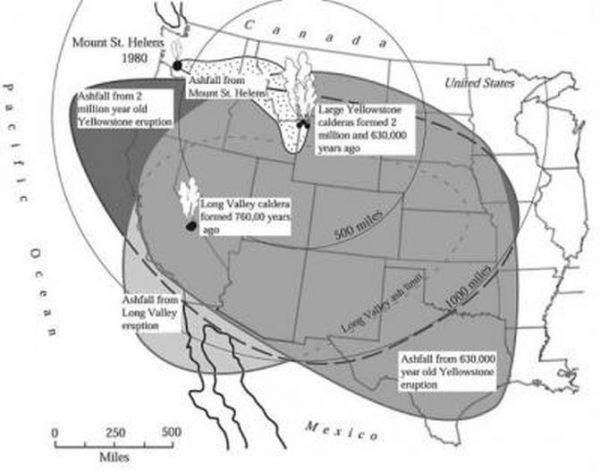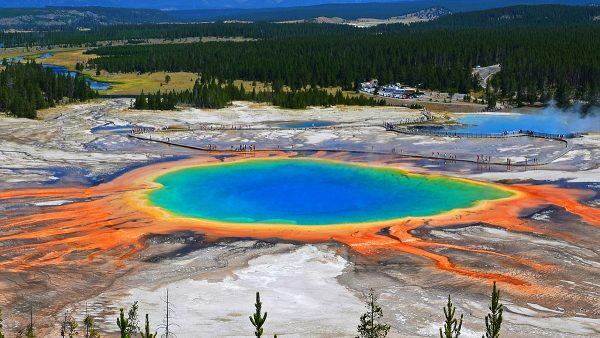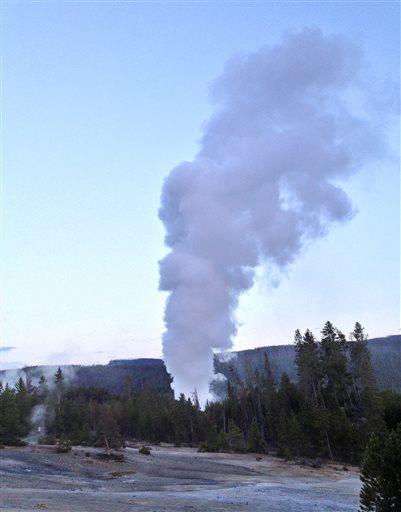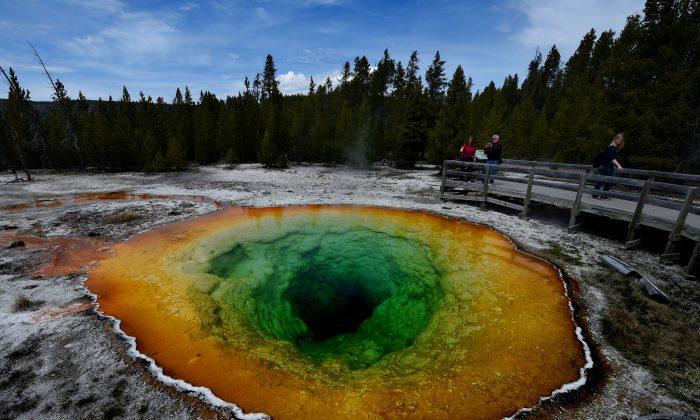The huge supervolcano under Yellowstone National Park hasn’t erupted in more than 600,000 years, and in recent years this has prompted speculation that it would explode at any moment, causing worldwide devastation.
“In a word, no. In two words, no way. In three words, not even close. Yellowstone doesn’t work that way,” wrote Michael Poland, Scientist-in-Charge of the Yellowstone Volcano Observatory, on March 25.
Pollard went on to address recent tabloid headlines about an “overdue” eruption. One U.K. news outlet in particular regularly posts stories about the Yellowstone caldera.

“In terms of large explosions, Yellowstone has experienced three — at 2.08, 1.3, and 0.631 million years ago. This comes out to an average of about 725,000 years between eruptions. That being the case, we still have about 100,000 years to go, but this number is based on very little data and so is basically meaningless (would you base any conclusion on the average of just two numbers?),” he wrote.
In the blog post, Pollard said that volcanoes don’t erupt on a schedule.
The idea of it being overdue for an eruption may come from how people think about earthquakes, which are caused by pressure that persistently builds on a fault before the quake happens.

“With rare exceptions, volcanoes do not accumulate magma at a constant rate (in the few cases where that does happen, eruptions can be somewhat regular). Instead, volcanoes erupt when there is a sufficient supply of liquid magma in the subsurface and sufficient pressure to cause that magma to ascend to the surface. This does not generally happen on a schedule,” he continued.
Regarding reports saying the volcanic eruption is “overdue,” Pollard stressed that claim is just not accurate.
“No matter how you slice it, Yellowstone is not overdue. No. No way. Not even close. But we can’t say the same about the oil change for your car, so you might want to check on that,” he concluded.

Less Warning Than Previously Thought?
However, in 2017, a widely publicized study found that prior to an eruption, we may only have a few decades of warning.Those minerals revealed that the temperature and composition, which led up to the eruption, built up over a few decades. In the past, geologists believed that it would take hundreds or thousands of years for the Yellowstone volcano to make such a transition.
“We expected that there might be processes happening over thousands of years preceding the eruption,” noted Christy Till, a geologist at Arizona State.






